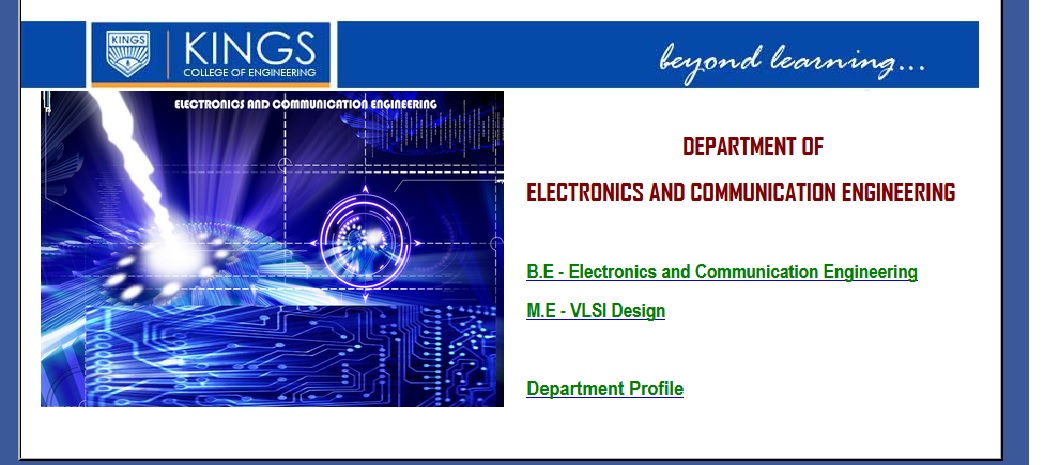EC1013 Radar & Navigational AIDS Question Bank : kings.ac.in
Name of the College : Kings College Of Engineering
Department : Electronics & Communication Engineering
Subject : Radar & Navigational AIDS
Website : kings.ac.in
Document Type : Question Bank
Download Model/Sample Question Paper : https://www.pdfquestion.in/uploads/ki…VIGATIONAL.pdf
Unit I
An Introduction To Radar :
Part A :(2 Marks)
1. What is radar?
2. What do you mean by maximum unambiguous range?
Related : Kings College of Engineering EC2253 Electromagnetic Fields Question Bank : www.pdfquestion.in/409.html
3. What is a PPI?
4. What are the main reasons for the failure of the simple form of the radar equation?
5. Define minimum detectable signal
6. What is called a false alarm?
7. What is called a missed detection?
8. What is called threshold detection?
9. What is thermal noise?
10. What is said to be the Rayleigh region?
11. What is called frequency diversion?

Part B : (16 Marks)
1. Explain the radar block diagram (16)
2. Explain about the Receiver noise and derive the signal to noise ratio (16)
3. Explain about the radar cross section of targets (16)
4. Explain the various system losses (16)
5. Derive the simple form of the radar equation (16)
Unit II
MTI And Pulse Doppler Radar :
Part A : (2 Marks)
1. Define MTI improvement factor.
2. What are bipolar and unipolar videos?
3. Define doppler frequency in MTI radar
4. What are stalo and coho?
5. State the methods to reduce blind speed.
6. What are the limitations of single delay line canceller?
7. What is automatic detection and track?
8. Define three-pulse canceller.
9. State the methods for employing multiple prfs to avoid losing target echoes due to blind speeds.
10. State two methods proposed for finding the effect of stagger periods.
Part B :(16 Marks)
1. Draw the block diagram of MTI radar and explain in detail. (16)
2. Explain blind speed and the methods for reducing the effects of blind speeds. (16)
3. Draw the block diagram of conical scan radar, one-coordinate monopulse tracking and explain its operation. (16)
4. With neat diagram explain the operation of sequential lobing and conical scan (16)
5. Explain automatic tracking with surveillance radar. (16)
Unit III
Part-A :(2Marks)
1. What is the procedure for sequential observer?
2. Define linear detector.
3. What is clutter map?
4. What is a saturation detector?
5. What are the limitations of fence?
6. What is a clutter?
7. Define directive gain of antenna
8. What is broadside array and end fire array?
9. What are the steps involved in automatic detection?
10. What are the types of active switch modulators?
Part B : (16 Marks)
1. Write notes on reflector antennas (16)
2. Explain briefly about integrators. (16)
3. Explain the coaxial magnetron with neat diagram (16)
4. Write notes on super heterodyne receiver. (16)
5. Draw the block diagram of conical scan radar,one-coordinate monopulse tracking and explain its operation. (16)
UNIT-IV
Part A (2 Marks)
1. What are the four methods of navigation?
2 .Define navigation by pilotage.
3. Define navigation by dead reckoning
4. What is the important source of antenna effect?
5. How the antenna effect is minimized?
6. Give the disadvantage of loop direction finder?
7. What are the errors arising in direction finders?
8. Define mountain effect.
9. What is the need of Adcock direction finders?
10. What are the types of automatic direction finders?
11. What are the two types of radio ranges in use?
12. What are the sources of errors in VOR system?
13. What is hyperbolic system of navigation?
14. Define DECCA navigation system.
15. What are the advantages of OMEGA system?
Part B (16 Marks)
1. Explain hyperbolic system of Navigation? (16)
2. Briefly discuss the VHF Omni Directional Range (VOR)? (16)
3. Explain briefly the Automatic Direction finders? (16)
4. Explain the errors arising in direction finders? (16)
5. Explain the four methods of navigation in detail? (16)
UNIT-V
Part A : (2Marks)
1. Give the Secondary Radar systems
2. Define TACAN.
3. What are the types of landing aids?
4. What is continuous wave Doppler Radar?
5. What are the features of Navigation over earth?
6. List the subassemblies of modern receiver.
7. What are the components of inertial navigation system?
8. Define LORAN
9. What is Doppler navigation?
10. Define inertial navigation
Part B : (16 Marks)
1. Briefly explain the secondary radar systems (16)
2. Discuss the Doppler navigation with a neat block diagram (16)
3. Explain the concept of inertial navigation systems (16)
4. Discuss the Satellite Navigational systems in detail (16)
5. Explain the Instrument LANDING systems (16)